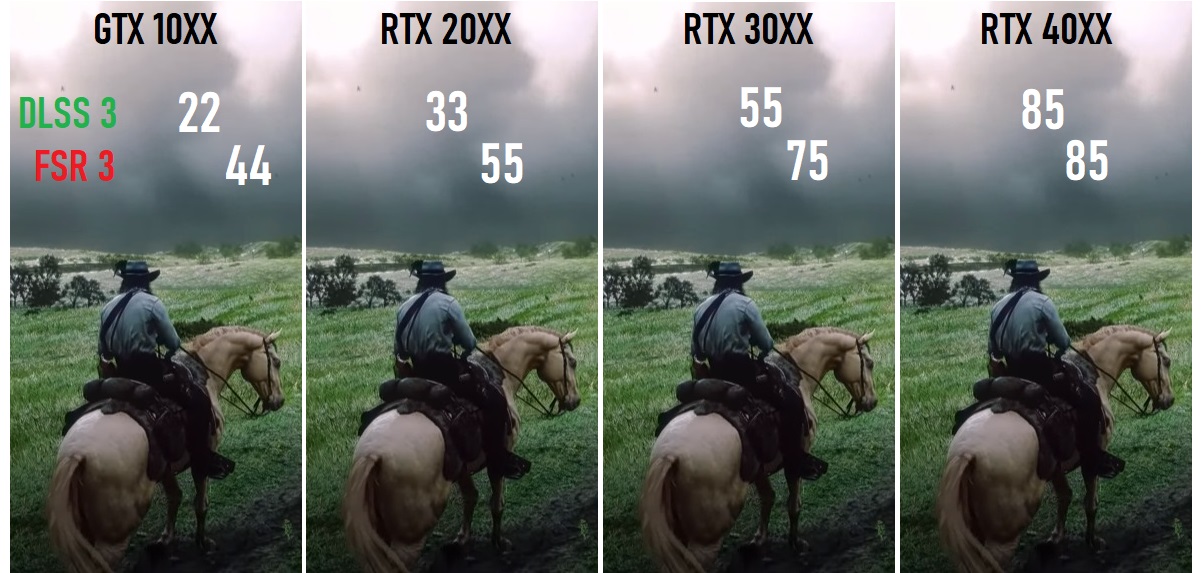In the realm of gaming technology, advancements often spark excitement and speculation among enthusiasts. AMD’s recent announcement of FSR 3.1 at GDC 2024 has certainly set the community abuzz with anticipation. But what exactly is FSR 3.1, and why is it being hailed as a potential game-changer? Let’s dive into the details to uncover the significance of this innovation.
Key Takeaway:
- AMD’s FSR 3.1 introduces groundbreaking improvements in frame generation technology, decoupling upscaling from frame generation.
- This innovation opens up new possibilities for gaming performance optimization, particularly for GPUs that do not support DLSS.
- FSR 3.1 promises enhanced image quality, reduced flickering, ghosting reduction, and better preservation of detail, potentially rivaling DLSS and other upscaling solutions.
Understanding FSR 3.1: Decoupling Upscaling and Frame Generation
One of the most significant aspects of FSR 3.1 is its decoupling of upscaling from frame generation. Traditionally, upscaling and frame generation have been tightly integrated processes, often limited to specific hardware configurations. However, with FSR 3.1, AMD is breaking away from this constraint, allowing users to mix and match upscalers and frame generation techniques.
Why is this important?
- Compatibility: FSR 3.1 enables compatibility with a wider range of GPUs, particularly those that do not support Nvidia’s DLSS.
- Flexibility: Users now have the freedom to choose the best combination of upscaling and frame generation for their specific hardware and gaming preferences.
- Performance Optimization: By decoupling these processes, AMD aims to optimize gaming performance without sacrificing image quality, offering a more customizable gaming experience.
The Impact on Gaming Performance
To understand the practical implications of FSR 3.1, let’s explore its potential impact on gaming performance and image quality.
Upscaling Quality Comparison
| Aspect | FSR 3.1 | FSR 3.0 | DLSS |
|---|---|---|---|
| Image Quality | Improved temporal stability | Less stable, flickering | Superior stability and detail |
| Ghosting Reduction | Reduced ghosting artifacts | Occasional ghosting issues | Minimal ghosting, high detail |
| Detail Preservation | Better preservation of detail | Some loss of detail | High detail preservation |
Real-Life Examples:
- In “The Last of Us Part One,” FSR 3.0 exhibited noticeable shimmering artifacts, while FSR 3.1 promises improved stability and detail preservation.
- “Starfield” showcased the limitations of FSR 3.0’s upscaling quality, which FSR 3.1 aims to address with reduced mushiness and enhanced detail clarity.
- Games like “Spider-Man: Miles Morales” and “Remnant 2” demonstrated the challenges of ghosting with FSR 3.0, highlighting the need for improvement in image quality.
Addressing Performance Concerns
While FSR 3.1 holds promise for enhancing gaming experiences, it’s essential to address potential concerns and limitations.
Frame Generation Realities
- Frame generation is not a panacea for low-performance hardware. It works best when the GPU can maintain a minimum of 60 FPS.
- While frame generation offers performance gains, it may not be sufficient to salvage a GPU that struggles with rendering complex scenes.
Compatibility Considerations
- FSR 3.1’s compatibility with a wide range of GPUs is a boon for users without access to DLSS. However, its effectiveness may vary based on individual hardware configurations.
- Users should experiment with different upscaling and frame generation combinations to find the optimal balance between performance and image quality.
Realistic Expectations
- While FSR 3.1 represents a significant advancement, it may not entirely bridge the gap with DLSS in terms of performance and image quality.
- Users should temper their expectations and recognize that FSR 3.1 is part of an ongoing evolution in gaming technology, with room for further refinement and improvement.
Future Implications and Applications
Looking ahead, FSR 3.1 has the potential to reshape the gaming landscape and influence hardware development and gaming experiences.
Handheld Gaming
- The improved image quality and performance optimization offered by FSR 3.1 could make handheld gaming devices like the Steam Deck more viable and appealing to enthusiasts.
- With the ability to achieve smoother gameplay and enhanced visuals, handheld gaming experiences may reach new heights of immersion and enjoyment.
Continued Innovation
- AMD’s commitment to advancing frame generation technology underscores the ongoing competition and innovation within the gaming industry.
- As FSR 3.1 gains traction and developers embrace its capabilities, we can expect to see further refinements and enhancements that push the boundaries of gaming performance.
Community Feedback
- User feedback and community engagement will play a crucial role in shaping the future direction of FSR and other gaming technologies.
- AMD’s responsiveness to user input and its willingness to iterate and improve upon FSR highlights the collaborative nature of technological innovation in gaming.
Conclusion: Embracing the Future of Gaming Technology
In conclusion, AMD’s FSR 3.1 represents a significant step forward in frame generation technology, offering users greater flexibility, improved image quality, and enhanced performance optimization. While challenges and limitations remain, the potential benefits of FSR 3.1 are undeniable, paving the way for a more immersive and accessible gaming experience for enthusiasts worldwide. As the gaming industry continues to evolve, FSR 3.1 stands as a testament to the power of innovation and collaboration in shaping the future of gaming technology.













